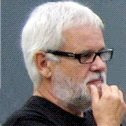
Amongst the reasons given by English Heritage for making Louise House, Dartmouth Road a Grade II listed building was the “decisive impression” it made on Janusz Korczak when he visited in 1911. Korczak is little known in this country and it seemed worth finding out about him.
Born Henryk Goldszmit in Warsaw in 1877 he took “Janusz Korczak” as a pen-name when he began writing in his early 20s. He studied medicine, became a paediatrician, a teacher and then worked in an orphanage, where he began developing his ideas about working with children.
In the Autumn of 1911 Korczak visited London. Political unrest in Warsaw, with rising anti-Semitism, left him uncertain about his future, feeling that his life was “unordered, lonely and alien” and he hoped his visit would relieve this depression. While in London he came to Forest Hill. It seems highly likely that he already knew about the two industrial homes established here in the mid-1870s and he came specifically see how they cared for destitute and orphaned children. Louise House and Shaftesbury House (in Perry Rise and demolished a few years ago) were founded on principles similar to those Korczak was developing; giving respect, care and support to needy children.
The founders of the industrial homes believed that children thrived best in a secure and supportive family environment. Because of unemployment, sickness or death some families were unable to provide this support and the industrial homes attempted to offer their children something approaching a family life, away from their home environment. They also offered a basic education and taught skills that would allow the children to find employment.
His visit to the industrial homes made a deep impression on Korczak. In a series of brief notes he described his visit. There were two houses, similar in style (they were designed by the same architect). In each house there were 30 children. The girls had a laundry, and were also taught sewing and embroidery. They walked each day to the local school (Kelvin Grove). Korczak also mentions an aquarium and rabbits, guinea pigs and pigeons kept as pets “like a miniature zoo”. There was also a kitchen garden, where the children could grow food, and a small museum.
In a letter written many years later Korczak described how affected he was by this visit and added: “I remember the moment when I decided not to have my own family. It was in a park near London…” He decided that rather than having children of his own he would “serve all children”.
Thus inspired, Korczak returned to Warsaw to develop his own orphanage along similar lines to those he saw at Louise House. In one of his books he wrote: “Children are not the people of tomorrow, but people today. They are entitled to be taken seriously. They have a right to be treated by adults with tenderness and respect, as equals. They should be allowed to grow into whoever they were meant to be.”
Korczak believed that children had rights and his proposals were eventually incorporated into the United Nations 1989 Convention on the Rights of the Child. Rules in his orphanage were discussed and agreed by the children, who also imposed sanctions on those who broke the rules. The children were also encouraged to write their own newspaper which was published as a supplement with the Warsaw daily newspaper.
His orphanage thrived, his enlightened ideas influencing teachers across the world, until 1 September 1939 when Nazi Germany invaded Poland. In 1940 the Warsaw Ghetto was created, a small area of the city to which Jewish people were confined. Korczak was told that he would have to move his children and staff to premises within the ghetto. Korczak was given many opportunities to leave, but each time he refused saying he would not abandon his children.
On the morning of 6 August 1942 German soldiers ordered the occupants of the orphanage to line up in the street. Korczak made sure his children were dressed in their best clothes and carried a favourite toy. The orphanage staff and 192 children were then herded through the streets of Warsaw towards the railway station, with Korczak at their head. During that fateful walk Korczak was again given the opportunity to escape, and again refused. Eye-witnesses said that his only concern was to comfort, reassure and support his children. The group was forced onto a train bound for Treblinka extermination camp. That is the last that was heard of them.
By an extraordinary coincidence Dietrich Bonhoeffer, another anti-Nazi who also chose death rather than betray his principles, had strong links with Forest Hill. There is a plaque on the house in Manor Mount where he lived for 18 months before returning to Germany to oppose Nazism. He is commemorated as a “protestant martyr” with a statue above the entrance to Westminster Abbey. Janusz Korczak is also revered as a martyr.
To have two such courageous and principled people, who died for their beliefs, so strongly associated with our area is a rare privilege, and something we should cherish and celebrate.

President Obama at a Korczak memorial
ceremony in Janusz Korczak Square, Jerusalem.
Behind him is the statue “Janusz Korczak and the Children”.

2 comments:
Such a Informative Article.
Lots of information about Janusz Korczak.
Thanks.
Thank you for recognizing my hero, Janusz Korczak. This wonderful, compassionate man is considered one of the 39 Great Men in Israel. It's a pity that so few of his writings are available in English. His works "How to Love a Child" and "The Child's Right to Respect" laid the groundwork for the UN Convention on the Rights of the Child and the 1979 UN International Year of the Child was observed in honor of the centenial of his birth. Yet, he is nowhere mentioned in either place - I am glad there are people getting the word out on Janusz Korczak.
Post a Comment